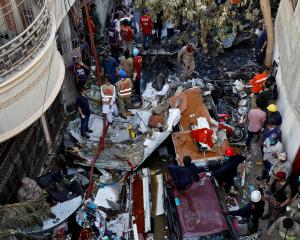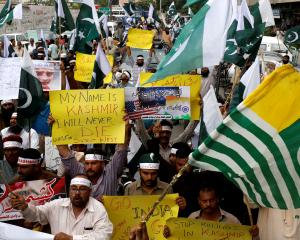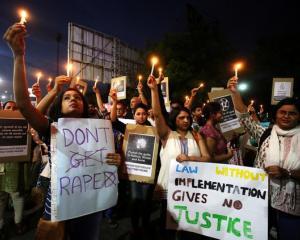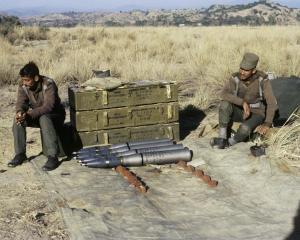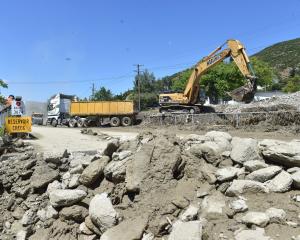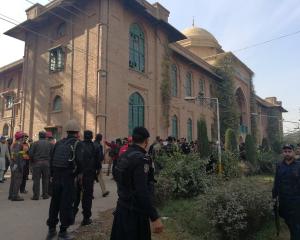There is little justice attendant upon the victims of natural disaster; just as the occurrence of catastrophe is largely unpredictable, so too is the public response.
For a number of reasons the Boxing Day Asian tsunami of 2004 captured the horrified imagination - and the compassion - of millions across the world.
It was a precipitous event that not only affected citizens from many countries, but occurred during a traditional lull in world news cycles.
Snatches of it were captured on film or video and its dramatic, destructive backwash soon beamed to television screens everywhere.
Similarly, the earthquake in Haiti that razed Port au Prince in January this year and destroyed the infrastructure of an already poverty-stricken nation: the images conveyed the ruinous power of the quake and flashed pictures of the homeless, the helpless and the badly injured into homes across the hemisphere.
Both these events were immediate, contained and compelling in their claim upon the world's compassion.
The floods that have engulfed Pakistan for more than a month now are said to be the country's worst natural disaster.
Indeed, an umbrella organisation for British aid agencies has described the crisis, precipitated by voluminous monsoon rains, as having the scale of the Asian tsunami and the destruction of the Haitian earthquake.
Louis-Georges Arsenault, the director of emergency services for Unicef, having criticised the lack of international response, has called the flooding the biggest humanitarian crisis in decades.
So why is the world not watching?The floods began in late July.
The United Nations estimates that as much as a fifth of Pakistan is under water.
As many as 20 million people in 11,000 villages are believed to have been affected.
In so far as it is possible to ascertain, about 1800 people have been killed to date, but the death rate is expected to soar as disease and lack of clean water, food and shelter takes its toll on the many millions of homeless.
The damage expected from the floods is almost incalculable: about 30% of agricultural land has been taken out of production, contributing to economic reversals of up to $NZ60 billion.
Unemployment will rise sharply, peasant farmers will be unable to plant next season's crops on their waterlogged land - adding to widespread fears of future starvation.
Some economists predict that inflation could spike at up to 25%; and that 2.5% of economic growth, or $US5 billion, could be wiped out.
Recovery will take several years.
Apart from the sheer scale of the disaster, in itself hard to comprehend, the perception problem for the Pakistan aid effort is multifaceted.
As described by UN Secretary-general Ban Ki-moon, it is a "slow motion tsunami".
This, and the isolation of much of the affected territory in the northwest of the country, the lack or destruction of communications infrastructure, and geopolitical considerations have all contributed to the torpor of indifference greeting the gradually rising tide of misery.
We require, it seems, Richter-scale jolts, or gigantic waves the likes of which are usually only seen in Hollywood eco-disaster films, to be moved.
Natural disasters and their "consumption" have almost acquired their own distinct "genre": the more televisual and dramatic the better.
They have long-since outlived the idealistic models of the 1970s and 1980s - when the music of George Harrison and friends in their Concert for Bangladesh focused attention on the plight of homeless Bengali refugees in that starvation-ravaged country; or when the Sir Bob Geldof -inspired Live Aid concerts brought famine in Ethiopia to the forefront of the global consciousness.
Those, too, were "slow-burning" disasters, but of another era.
As the Pakistani military and aid agencies struggle to distribute food and water, suicide bombers continue to vent their own form of destruction upon the country.
And the Pakistani Taliban gains support in remote areas, neglected or not yet reached by the government, casting shadows over the stability of the country and the security of aid efforts.
Notwithstanding the heroic works of agencies such as Unicef, and the almost saintly generosity of people such as Wellington investor and economist Gareth Morgan - who has promised to match the New Zealand donation to Unicef dollar for dollar - there is also the sad reality of compassion fatigue: when the persistent parade of pain and human suffering becomes overwhelming, the temptation is to switch off.
It is as if we have seen that movie before.

